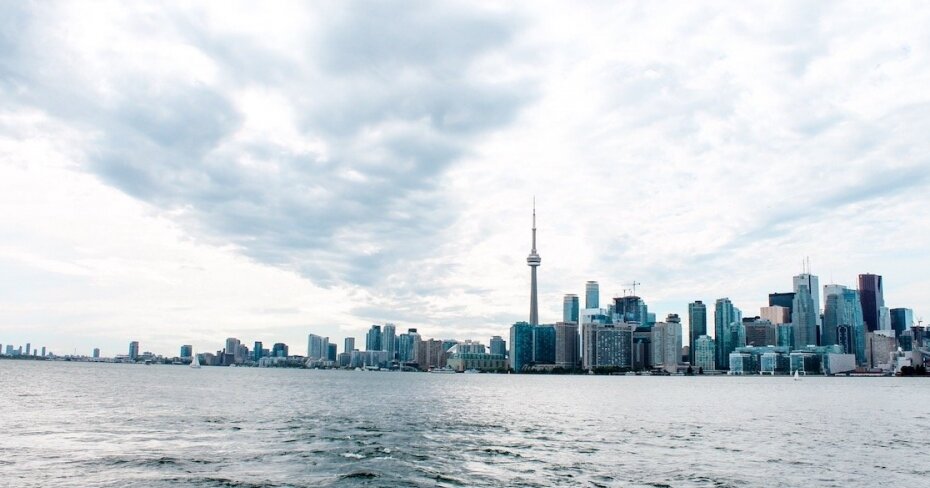Why do Canadian cities refuse to release flood zone maps?
By: Alexandra Bosanac on July 7, 2017
Between the massive floods that pummelled communities in Montreal's West Island, and the rains that forced the shutdown of the beloved Toronto Islands, it’s been a wet summer.
In Toronto’s case, Mayor John Tory acknowledged that climate change was likely the reason for the flooding, aligning himself with the majority of climate scientists who say these storms are set to become more intense in their severity and their frequency.
The effects are already tangible: flooding is the number one cost realized in Canada due to climate change and in insurable damages, according to a recent report from the University of Waterloo.
It would be helpful, then, to know if you live, or are moving to, an area that could be susceptible to flooding. However, that’s something easier said than done.
Many municipalities in Canada have not updated their floodplain maps, because funding has dried up for the multitude of conservation agencies that monitor water systems. In Ontario, three quarters of the provincial maps are out of date. A complete update would cost an estimated $136-million.
Many insurers are also no longer offering flood insurance in some areas that have flooded recently because the premiums would be unaffordable for most policyholders.
Federal aid isn’t there, either. Many homeowners in High River, Alta. learned they didn’t qualify for relief after the devastating 2013 floods because their houses weren’t located in designated flood zones — because the maps hadn’t been updated.
The possible repercussions could even spill over to Canada’s financial markets. The average cost to restore a basement is $42,000 — if homeowners are forced to pay out of pocket, it could destabilize the mortgage market. The Intact Centre on Climate Adaptation at the University of Waterloo is tracking communities that have had repeated flooding to see if there are spikes in mortgage defaults.
Not having easy access to that information has made it harder for homeowners to assess their individual exposure to risk. Unfortunately, there hasn’t been much political will to update the maps.
Why it’s a political hot potato
Blair Feltmate, head of the Intact Centre on Climate Adaptation, gives regular keynotes to politicians of all levels of government about the gravity of not updating floodplain maps.
“There's been a time when I've received serious pushback on legitimacy of climate change being real,” says Feltmate. “It once got to the point that they got so angry — literally so angry — I’ve thought, ‘Holy cow this might be tricky for me to get to my car in one piece.’ They get substantially, substantially angry at the idea that they might need to change.”
Floodplain maps are politically toxic for officials that support their creation, explains Feltmate, because “right away, you will find out that there are existing communities that didn't think they were vulnerable to flooding,” and having that information in the open could drive down the value of the real estate in those communities.
Updating the maps could prevent building in certain areas, which would spell more bad news for politicians who may have been counting on expanding their tax base. Municipal officials are also wary of upsetting developers, who may then be required to make significant design changes.
Through an Access to Information request, The Canadian Press obtained internal documents that showed municipal officials do indeed fear a backlash.
After being made aware of new technologies that could help make the location of flood zones more widely accessible, one official said “they fear releasing the information would force them to use the Tim Hortons drive-up window to avoid the ire of those inside the restaurant.”
Feltmate says the current political deadlock could be resolved. In a new report on providing relief for natural disaster, all three federal departments on the climate change file — Public Safety Canada, Environment Canada, and Natural Resources Canada — have budgeted money towards updating the floodplain maps.
What you can do to de-risk yourself:
In the meantime, there are measures people can take to insure themselves against flood damage.
It’s pretty simple: in the absence of data, just assume you’re living in a flood zone, says Feltmate.
People mistakenly assume that you need to be close to the water’s edge to be in a flood zone. But in 2013, a residential neighbourhood near Toronto’s Downsview Park, which is approximately 30 kilometres north of Lake Ontario, experienced severe flooding three times in the course of one year. The three major sewer systems that connect in that neighbourhood couldn't contain the record rainfall.
“It was to the point where houses looked like islands. There was water from porch to porch,” says Feltmate.
Plus, the weather of the past is an extremely poor predictor of the weather of the future, due to climate change.
Individual homeowners should also call their broker or insurance company to confirm the breadth of their insurance coverage. There are two types of insurance products that cover floods: sewer backup and overland flooding. Feltmate advises homeowners ask for a statement from their insurer that makes clear your annual limit and your deductible.
More tips on how you can de-risk your home (and that you can do over a weekend):
- Remove any debris from the nearest storm drain
- Disconnect downspouts and extend them at least two metres away from your house’s foundation
- Seal basement windows and consider installing window well covers
- Check on the working condition of your sub pump and purchase a generator for it, in the event the electricity goes out.
- Finally, store electronics and valuable items in waterproof containers
The Intact Centre’s research finds that every dollar invested in home upgrades yields seven dollars of savings on potential damages.
“You need to be vigilant and check on these things,” says Feltmate, who advises doing a yearly assessment. “It’s the equivalent of buying a car and changing the oil once or twice.”


